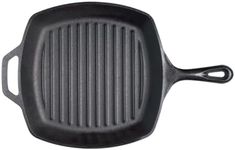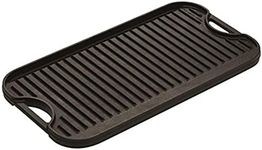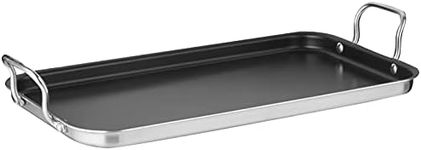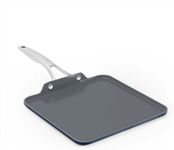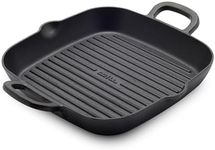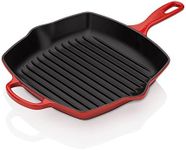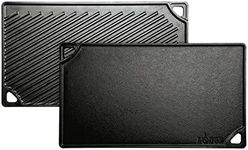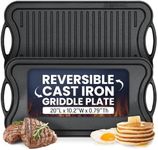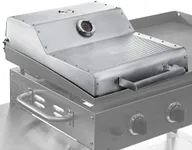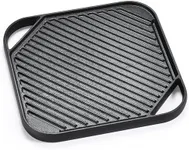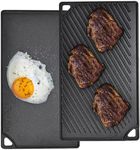Buying Guide for the Best Grill Pans
Choosing the right grill pan can significantly enhance your cooking experience, allowing you to achieve those perfect grill marks and flavors without needing an outdoor grill. When selecting a grill pan, it's important to consider several key specifications that will impact your cooking results and overall satisfaction. Here are the main factors to keep in mind and how to navigate them to find the best fit for your needs.MaterialThe material of a grill pan affects its heat conductivity, durability, and ease of cleaning. Common materials include cast iron, stainless steel, and non-stick aluminum. Cast iron retains heat well and provides excellent grill marks, but it is heavy and requires seasoning. Stainless steel is durable and easy to clean but may not heat as evenly. Non-stick aluminum is lightweight and easy to clean, but it may not last as long and can be prone to scratching. Choose cast iron if you want superior heat retention and don't mind the weight and maintenance. Opt for stainless steel if you prefer durability and ease of cleaning. Non-stick aluminum is best if you prioritize convenience and ease of use.
SizeThe size of the grill pan determines how much food you can cook at once. Grill pans come in various sizes, typically ranging from 8 to 12 inches in diameter. A larger pan allows you to cook more food simultaneously, which is ideal for families or entertaining guests. However, larger pans can be heavier and harder to store. Smaller pans are more manageable and easier to store but may not accommodate larger quantities of food. Consider your cooking habits and the number of people you usually cook for when choosing the size. If you often cook for a crowd, a larger pan is more suitable. For smaller households or limited storage space, a smaller pan may be more practical.
HandleThe handle of a grill pan affects its maneuverability and comfort during use. Handles can be made from various materials, including metal, plastic, and wood. Metal handles are durable and can withstand high temperatures, making them suitable for oven use. However, they can get very hot, so oven mitts are necessary. Plastic and wood handles stay cooler to the touch but may not be oven-safe. Some pans feature removable or foldable handles for easier storage. Choose a handle that feels comfortable in your hand and suits your cooking style. If you plan to use the pan in the oven, ensure the handle is oven-safe.
RidgesThe ridges on a grill pan create the characteristic grill marks and help drain away excess fat from the food. The height and spacing of the ridges can vary. Higher ridges provide more pronounced grill marks and better fat drainage but may be harder to clean. Lower ridges are easier to clean but may not produce as distinct grill marks. Closely spaced ridges offer more surface contact with the food, which can enhance browning. Consider how important grill marks and fat drainage are to you. If you prioritize these features, look for a pan with higher, well-spaced ridges. If ease of cleaning is more important, opt for lower ridges.
CompatibilityNot all grill pans are compatible with every type of stovetop. Some materials, like cast iron and stainless steel, work well on all stovetops, including induction. Non-stick aluminum pans may not be suitable for induction cooktops. Additionally, some pans are oven-safe, allowing for versatile cooking options. Check the manufacturer's specifications to ensure the grill pan is compatible with your stovetop and meets your cooking needs. If you have an induction cooktop, make sure the pan is induction-compatible. If you want to use the pan in the oven, ensure it is oven-safe.

